In 2021, the construction and development of global 5G network has made great achievements. According to the data released by GSA in August, more than 175 operators in more than 70 countries and regions have launched 5G commercial services. There are 285 operators who are investing in 5G. China's 5G construction pace is at the forefront of the world. The number of 5G base stations in China has exceeded one million, reaching a staggering 1159000, accounting for more than 70% of the world. In other words, for every three 5G base stations in the world, two are located in China.
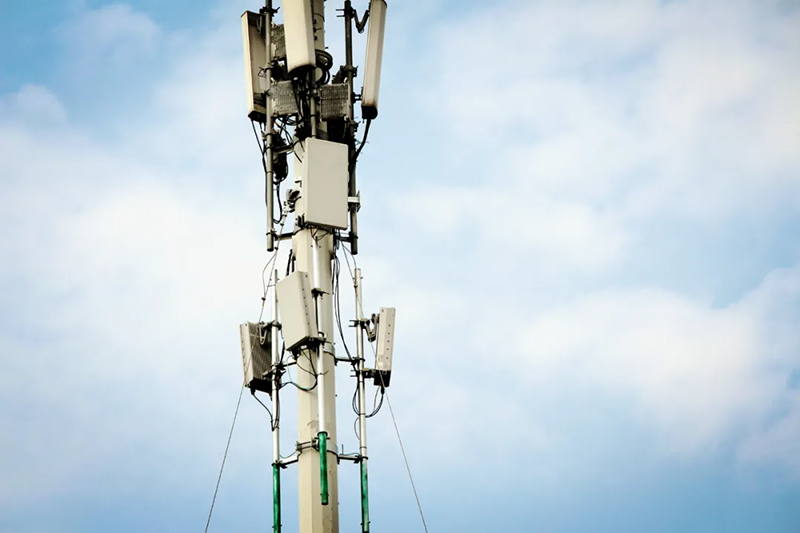
5G base station
The continuous improvement of 5G network infrastructure has accelerated the landing of 5G in consumer Internet and industrial Internet. Especially in the vertical industry, there are more than 10000 5G application cases in China, covering many fields such as industrial manufacturing, energy and power, ports, mines, logistics and transportation.
There is no doubt that 5G has become a sharp weapon for the digital transformation of domestic enterprises and an engine for the high-quality development of digital economy in the whole society.
However, while 5G applications are accelerated, we will find that the existing 5G technology has begun to show a state of "incompetence" in some special industry application scenarios. In terms of rate, capacity, delay and reliability, it can not meet 100% of the requirements of the scenario.
Why? Is 5G, which is highly expected by people, still difficult to be a big responsibility?
Of course not. The main reason why 5G is "inadequate" is that we only use "half 5G".
I believe many people know that although 5G standard is the only one, there are two frequency bands. One is called sub-6 GHz band, and the frequency range is below 6GHz (accurately, below 7.125Ghz). The other is called millimeter wave band, and the frequency range is above 24GHz.

Range comparison of two frequency bands
At present, only 5G of sub-6 GHz band is commercially available in China, and there is no 5G of commercial millimeter wave band. Therefore, all the energy of 5G has not been completely released.
Technical advantages of millimeter wave
Although 5G in sub-6 GHz band and 5G in millimeter wave band are 5G, there are great differences in performance characteristics.
According to the knowledge in middle school physics textbooks, the higher the frequency of wireless electromagnetic wave, the shorter the wavelength, and the worse the diffraction ability. Moreover, the higher the frequency, the greater the penetration loss. Therefore, the 5G coverage of millimeter wave band is obviously weaker than the former. This is the main reason why there is no commercial millimeter wave for the first time in China, and it is also the reason why people question millimeter wave.
In fact, the deep-seated logic and truth of this problem are not quite the same as everyone's imagination. In other words, we actually have some wrong prejudices about millimeter waves.
First of all, from the perspective of technology, we must have a consensus, that is, under the premise of no revolutionary change in the existing basic communication theory, if we want to further significantly improve the network rate and bandwidth, we can only make an issue on the spectrum.
Seeking richer spectrum resources from higher frequency bands is an inevitable choice for the development of mobile communication technology. This is true for millimeter waves now and terahertz that may be used for 6G in the future.

Schematic diagram of millimeter wave spectrum
At present, the sub-6 GHz band has a maximum bandwidth of 100MHz (even 10MHz or 20MHz in some places abroad). It is too difficult to achieve a rate of 5Gbps or even 10Gbps.
The 5G millimeter wave band reaches 200mhz-800mhz, which makes it much easier to achieve the above goals.
Not long ago, in August 2021, Qualcomm joined hands with ZTE to realize 5G SA dual connection (nr-dc) for the first time in China. Based on 200MHz carrier channel in 26ghz millimeter wave band and 100MHz bandwidth in 3.5GHz band, Qualcomm worked together to achieve a single user downlink peak rate of more than 2.43gbps.
The two companies also use carrier aggregation technology to achieve a single user downlink peak rate of more than 5Gbps based on four 200MHz carrier channels in the 26ghz millimeter wave band.
In June this year, at the MWC Barcelona exhibition, Qualcomm realized a peak rate of up to 10.5Gbps by using Xiaolong X65, 8-Channel aggregation based on n261 millimeter wave band (single carrier bandwidth of 100MHz) and 100MHz bandwidth in n77 band. This is the fastest cellular communication rate in the industry.
Single carrier bandwidth of 100MHz and 200MHz can achieve this effect. In the future, based on single carrier 400MHz and 800MHz, it will undoubtedly achieve a rate far exceeding 10Gbps!
In addition to the significant increase in rate, another advantage of millimeter wave is lower delay.
Because of the subcarrier spacing, the delay of 5G millimeter wave can be one quarter of that of sub-6ghz. According to the test verification,
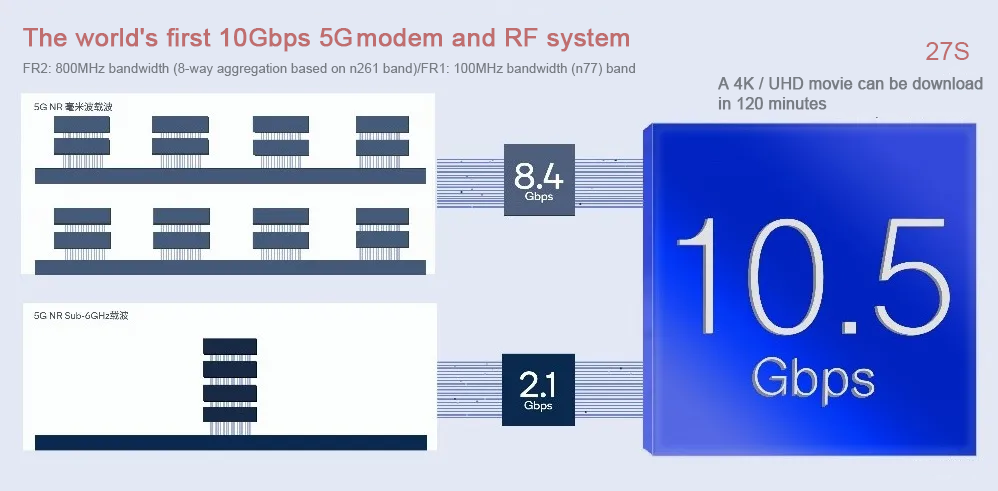
the air interface delay of 5G millimeter wave can be 1ms, and the round-trip delay can be 4ms, which is excellent.
The third advantage of millimeter wave is its small size.
The wavelength of millimeter wave is very short, so its antenna is very short. In this way, the volume of millimeter wave equipment can be further reduced and has a higher degree of integration. The difficulty for manufacturers to design products is reduced, which is conducive to promoting the miniaturization of base stations and terminals.
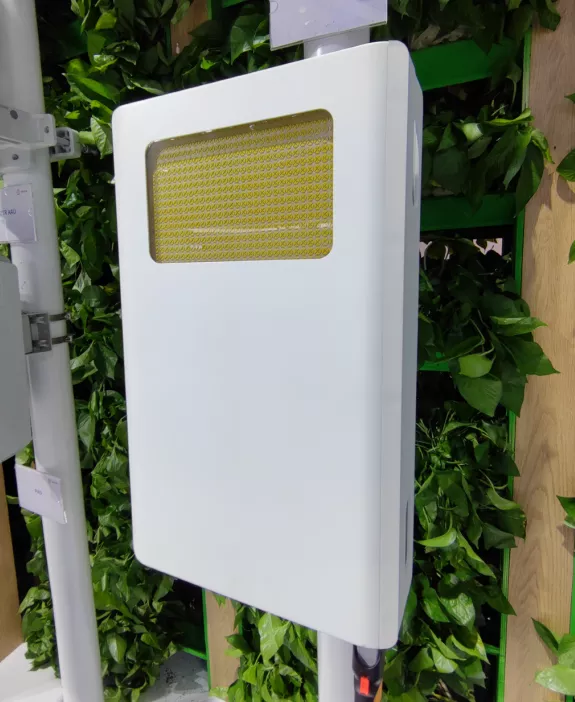
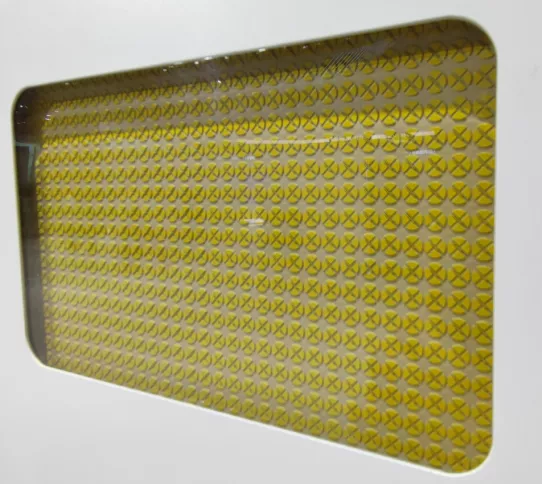
Millimeter wave antenna (yellow particles are antenna oscillators)
More dense large-scale antenna arrays and more antenna oscillators are also very beneficial to the application of beamforming. The beam of millimeter wave antenna can play farther and has stronger anti-interference ability, which is conducive to making up for the disadvantage of coverage.
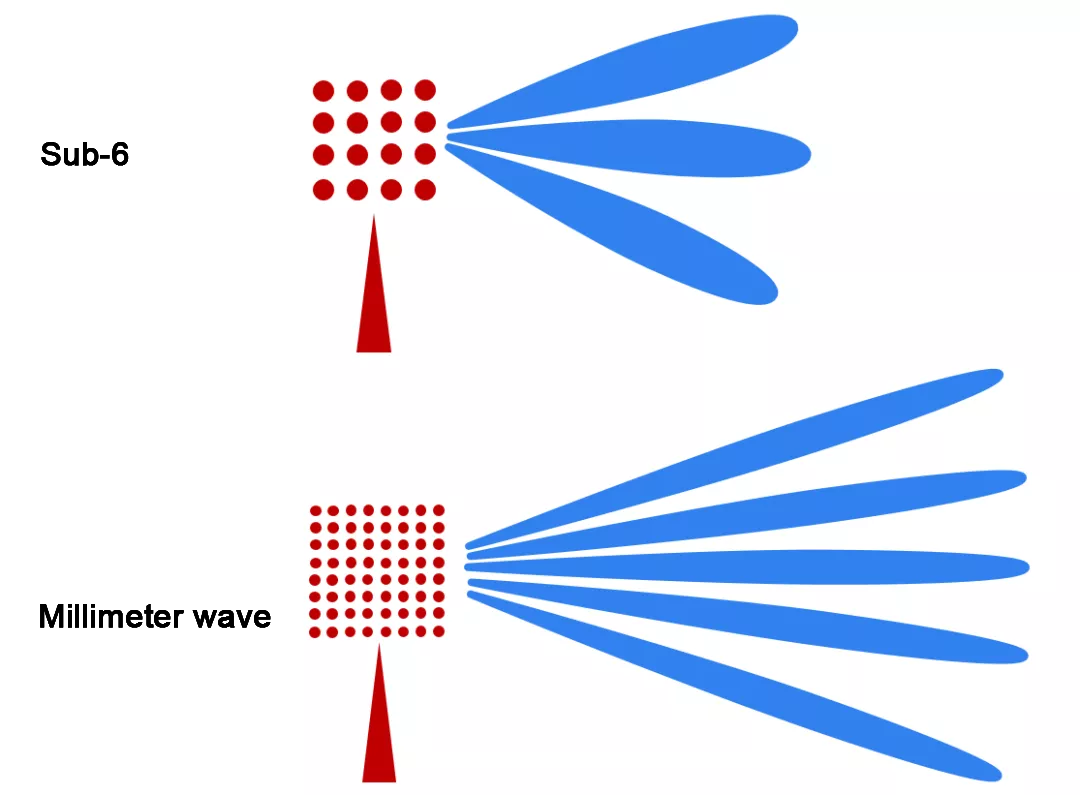
The more oscillators, the narrower the beam and the longer the distance
The fourth advantage of millimeter wave is its high-precision positioning ability.
The positioning ability of wireless system is closely related to its wavelength. The shorter the wavelength, the higher the positioning accuracy.
Millimeter wave positioning can be accurate to centimeter level or even lower. This is why many cars are now using millimeter wave radar.
Having said the advantages of millimeter wave, let's go back and talk about the disadvantages of millimeter wave.
Any (Communication) technology has its own advantages and disadvantages. The disadvantage of millimeter wave is that it has weak penetration and short coverage.
Previously, we mentioned that millimeter wave can enhance the coverage distance by beamforming enhancement. In other words, the energy of a large number of antennas is concentrated in a certain direction, so as to enhance the signal in a specific direction.
Now millimeter wave adopts high gain directional array antenna to meet the mobility challenge through multi beam technology. According to the practical results, the analog beamforming supporting narrow beam can effectively overcome the significant path loss in the frequency band above 24GHz.
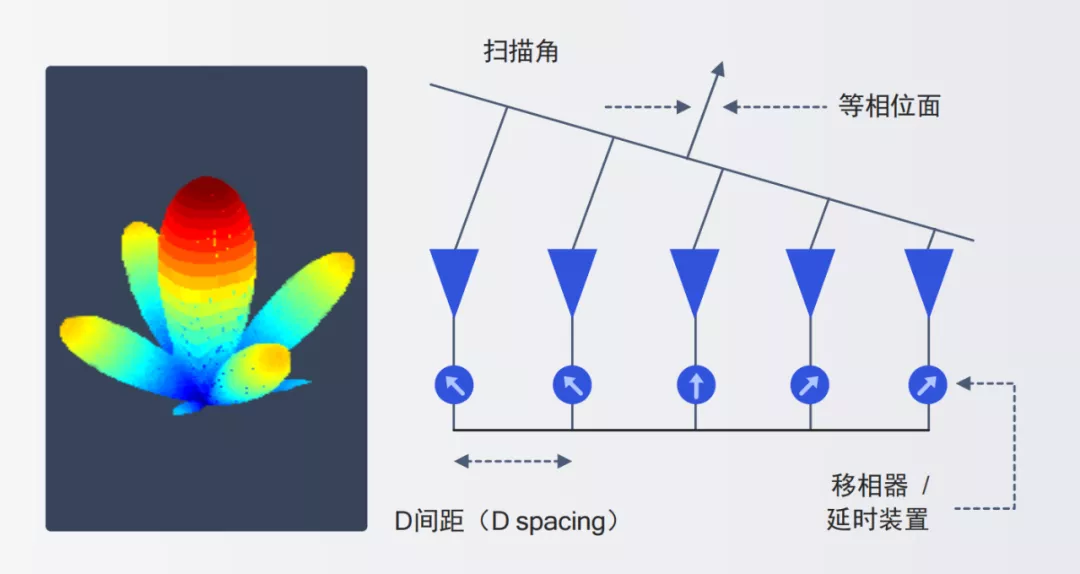
High gain directional antenna array
In addition to beamforming, millimeter wave multi beam can also better realize beam switching, beam guidance and beam tracking.
Beam switching means that the terminal can select more suitable candidate beams for reasonable switching in a continuously changing environment to achieve better signal effect.
Beam guidance means that the terminal can change the uplink beam direction to match the incident beam direction from gnodeb.
Beam tracking means that the terminal can distinguish different beams from gnodeb. The beam can move with the movement of the terminal, so as to achieve strong antenna gain.
Millimeter wave enhanced beam management capability can effectively improve signal reliability and achieve stronger signal gain.

Millimeter wave can also adopt path diversity to deal with the blocking problem through vertical diversity and horizontal diversity.
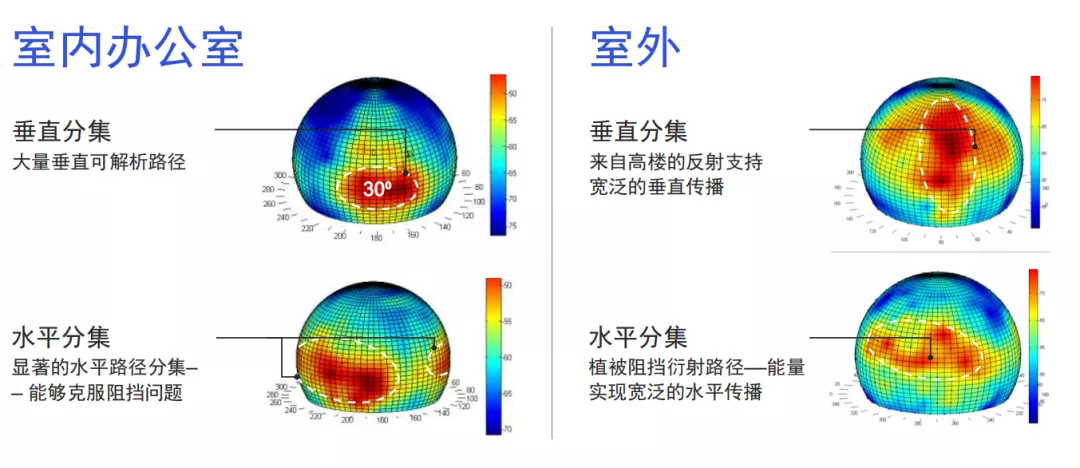
Simulation effect demonstration of path diversity
On the terminal side, the terminal antenna diversity can also improve the reliability of the signal, alleviate the hand blocking problem, and reduce the impact caused by the user's random orientation.
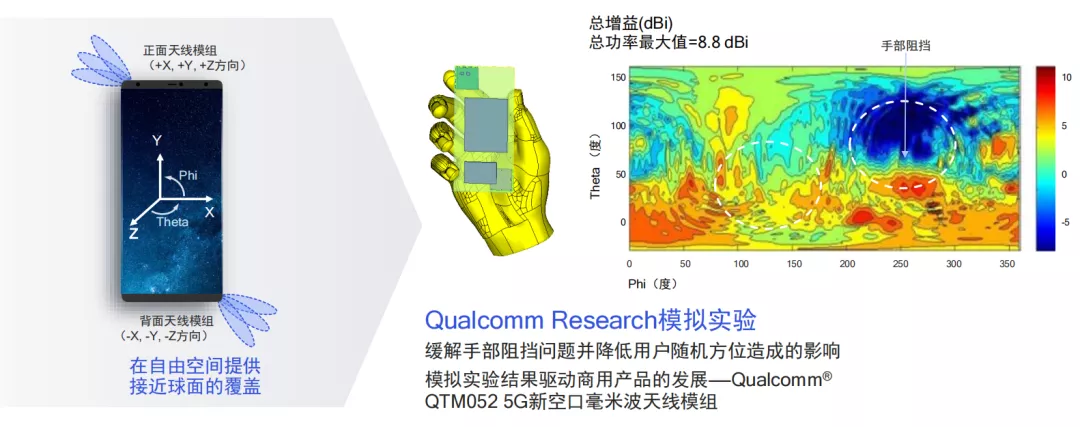
Simulation effect demonstration of terminal diversity
To sum up, with the in-depth study of millimeter wave reflection technology and path diversity, the coverage of millimeter wave has been greatly improved and non line of sight (NLOS) transmission has been realized through more advanced multi beam technology. In terms of technology, millimeter wave has solved the previous bottleneck and become more and more mature, which can fully meet the commercial demand.
In terms of industrial chain, 5G millimeter wave is also far more mature than you think.
Last month, Fuchang Li, director of the wireless technology research center of China Unicom Research Institute, made it clear that "at present, the millimeter wave industry chain capability has become mature."
At the MWC Shanghai exhibition at the beginning of the year, domestic operators also said: "with the support of spectrum, standards and industry, millimeter wave has made positive commercialization progress. By 2022, 5G millimeter wave will have large-scale commercial capacity."
Millimeter wave application filed
Having finished the technical advantages of millimeter wave, let's take a look at its specific application scenarios.
As we all know, the most important thing to use technology is to "develop strengths and avoid weaknesses". In other words, a technology should be used in the scenario that can give full play to its advantages.
The advantages of 5G millimeter wave are rate, capacity and time delay. Therefore, it is most suitable for airports, stations, theatres, gymnasiums and other densely populated places, as well as vertical industry scenes that are very sensitive to time delay, such as industrial manufacturing, remote control, Internet of vehicles and so on.
In terms of specific application fields, virtual reality, high-speed access, industrial automation, medical health, intelligent transportation, etc. are all places where 5G millimeter wave can be used.
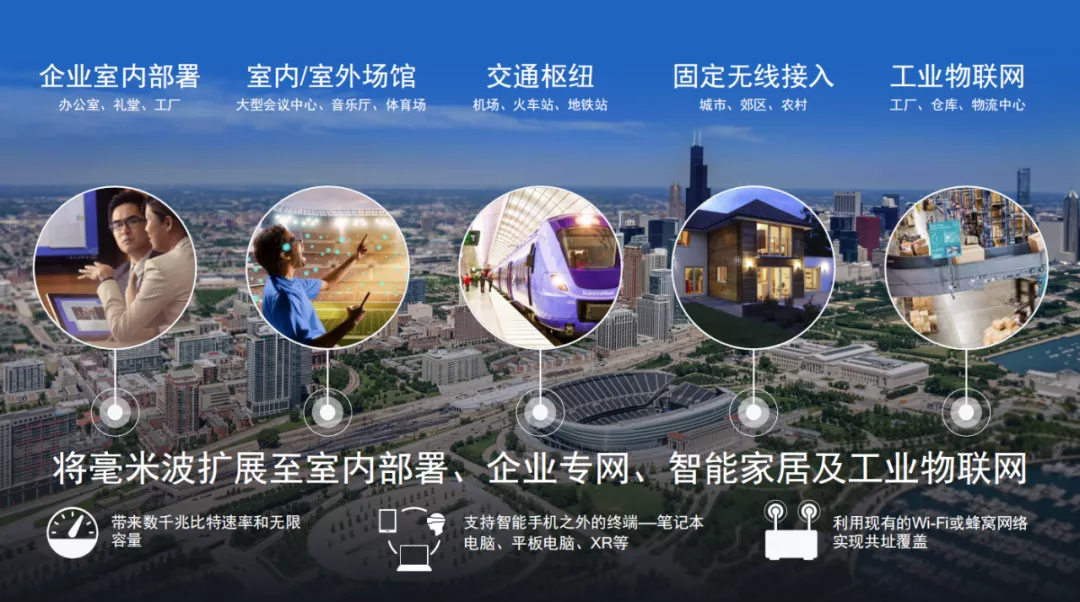
For the consumption of the Internet.
For ordinary individual users, the largest bandwidth demand comes from video and the largest delay demand comes from games. VR / AR Technology (virtual reality / augmented reality) has dual requirements for bandwidth and delay.
VR / AR technology is developing rapidly, including the recently very hot metauniverse, which is also closely related to them.
To get a perfect immersive experience and completely eliminate dizziness, the video resolution of VR must be above 8K (even 16K and 32K), and the delay must be within 7ms. There is no doubt that 5G millimeter wave is the most suitable wireless transmission technology.
Qualcomm and Ericsson conducted XR test based on 5G millimeter wave, bringing 90 frames per second and 2K to each user × XR experience with 2K resolution, with a delay of less than 20ms, and an average downlink throughput of more than 50Mbps.
The test results show that only one gnodeb with a system bandwidth of 100MHz can support 5G access of six XR users at the same time. With the support of 5G features in the future, it is more promising to support the simultaneous access of more than 12 users.
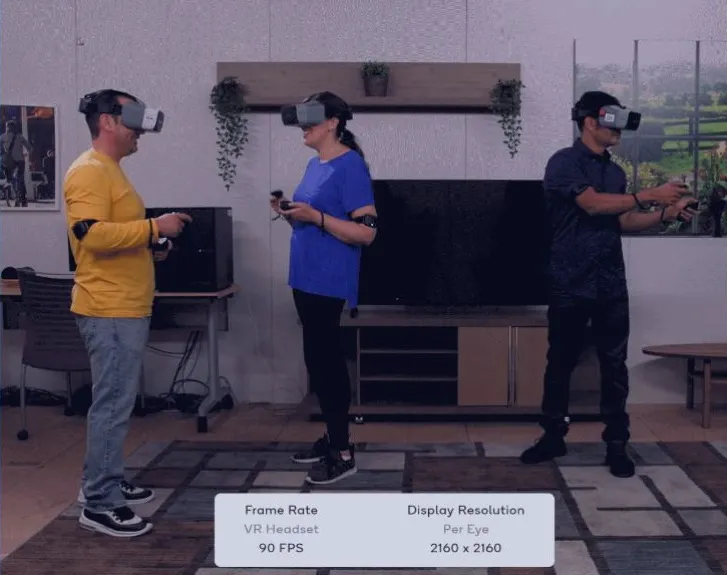
XR test
Another important application scenario of 5G millimeter wave surface to C-end consumer users is the live broadcast of large-scale sports events.
In February 2021, the American football season finals "super bowl" was held at Raymond James Stadium.
With the help of Qualcomm, Verizon, a well-known U.S. operator, has built the stadium into the fastest Internet stadium in the world by using 5G millimeter wave technology.
During the competition, the 5G millimeter wave network carried more than 4.5tb of total traffic. In some scenarios, the peak rate was as high as 3gbps, about 20 times that of 4G LTE.
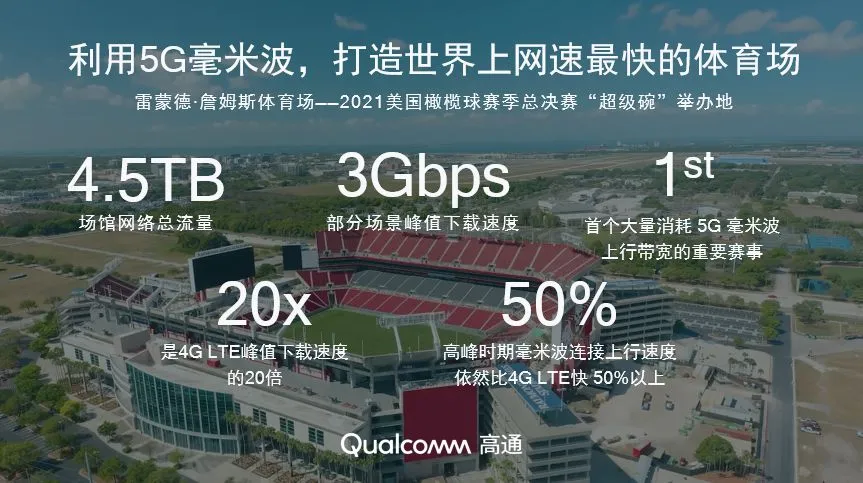
In terms of uplink speed, this super bowl is the world's first important event using 5G millimeter wave uplink transmission. The millimeter wave frame structure is flexible, and the uplink and downlink frame ratio can be adjusted to achieve higher uplink bandwidth.
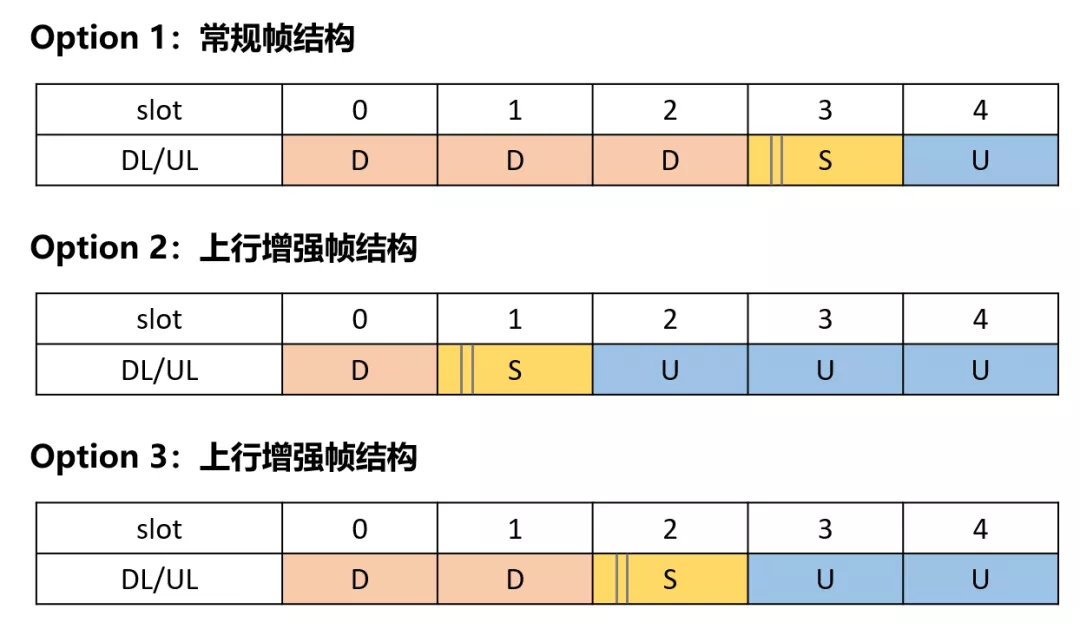
According to the field data, even at peak hours, 5G millimeter wave is more than 50% faster than 4G LTE. With the help of strong uplink ability, fans can upload photos and videos to share the wonderful moments of the game.
Verizon has also created an application to support fans to watch 7-channel streaming HD live games at the same time, and 7 cameras present the games from different angles.
In 2022, the 24th Winter Olympic Games will be opened in Beijing. At that time, there will be not only the access and traffic demand brought by audience mobile phones, but also the return data demand brought by media broadcasting. In particular, multi-channel 4K HD video signal and panoramic camera video signal (used for VR viewing) pose a severe challenge to the uplink bandwidth of mobile communication network.
In response to these challenges, China Unicom plans to actively respond with 5G millimeter wave technology.
In May this year, ZTE, China Unicom and Qualcomm conducted a test. Using 5G millimeter wave + large uplink frame structure, 8K video content collected in real time can be stably transmitted back, and finally successfully received and played back at the receiving end.
Let's take a look at the vertical industry application scenario.
5G millimeter wave has a broader application prospect in tob.
First of all, VR / AR mentioned above can also be used in tob industry.
For example, engineers can conduct remote inspection of equipment in different places through AR, provide remote guidance to engineers in different places, and conduct remote acceptance of goods in different places. During the epidemic period, these applications can help enterprises solve practical problems and greatly reduce costs.
Look at the video return application. Now many factory production lines have installed a large number of cameras, including some high-definition cameras for quality inspection. These cameras take a large number of high-definition product pictures for defect analysis.
For example, COMAC carries out metal crack analysis on product solder joints and sprayed surfaces in this way. After the photos are taken, they need to be uploaded to the cloud or MEC edge computing platform, with an uplink speed of 700-800mbps. It adopts 5G millimeter wave large uplink frame structure, which can be easily handled.
Another scene closely related to 5G millimeter wave technology is AGV unmanned vehicle.
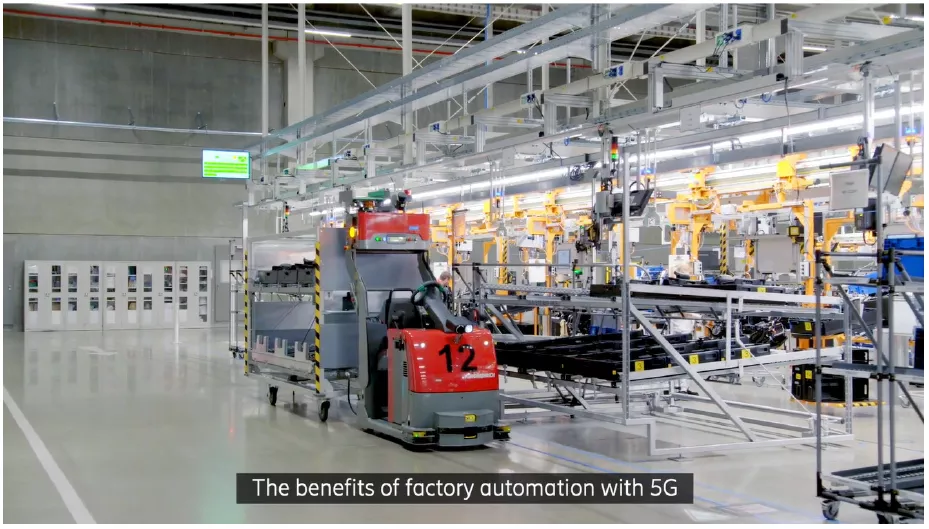
5G millimeter wave supports AGV operation
AGV is actually a miniaturized unmanned driving scene. AGV's positioning, navigation, scheduling and obstacle avoidance have high requirements for network delay and reliability, as well as high requirements for accurate positioning ability. A large number of real-time map updates of AGV also put forward requirements for network bandwidth.
5G millimeter wave can fully meet the above requirements of AGV application scenarios.
In January 2020, Ericsson and Audi successfully tested 5G urllc function and practical industrial automation application based on 5G millimeter wave in the factory laboratory in Kista, Sweden.
Among them, they jointly built a robot unit, which is connected by 5G millimeter wave.

As shown in the figure above, when the robot arm makes the steering wheel, the laser curtain can protect the opening side of the robot unit. If factory workers reach in, based on the high reliability of 5G urllc, the robot will stop working immediately to avoid injury to workers.
This instant response to ensure reliability is impossible in traditional Wi Fi or 4G.
The above example is only part of the application scenario of 5G millimeter wave. In addition to the industrial Internet, 5G millimeter wave is strong in remote surgery in smart medicine and driverless in the Internet of vehicles.
As an advanced technology with many advantages such as high rate, large capacity, low time delay, high reliability and high positioning accuracy, 5G millimeter wave has attracted extensive attention from all walks of life.
Conclusion
The 21st century is a century of data.
The huge commercial value contained in the data has been recognized by the world. Nowadays, almost all industries are looking for the relationship between themselves and data and participating in the mining of data value.
Connectivity technologies represented by 5G and computing technologies represented by cloud computing, big data and artificial intelligence are indispensable tools for mining data value.
Making full use of 5G, especially in millimeter wave band, is tantamount to mastering a "golden key" of digital transformation, which can not only realize the innovation leap of productivity, but also be invincible in the fierce competition in the future.
In a word, the technology and industry of 5G millimeter wave have fully matured. With the application of 5G industry gradually entering the deep water area, we should step up the domestic commercial landing of 5G millimeter wave and realize the coordinated development of sub-6 and millimeter wave.
Post time: Dec-14-2021




